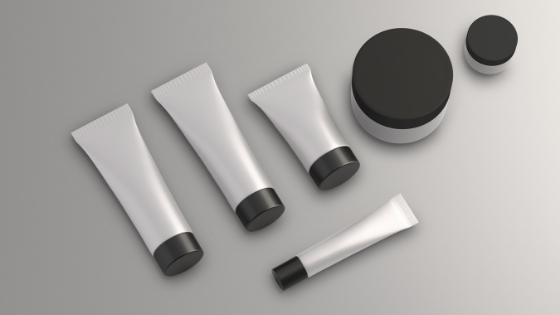There are many laws surrounding the packaging of cosmetics, with the majority of them regarding the labelling of ingredients. All manufacturers must make themselves aware of the labelling requirements for cosmetic products, including that of deceptive labelling which” can land producers with a fine or court action.
Deceptive labelling is defined as that which provides “false, deceptive misleading information to customers.”

However, before we look at mandatory labelling for cosmetic products, it’s first necessary to determine exactly what we mean by cosmetics. These are defined by the IC(NA) Act as:
(a) a substance or preparation intended for placement in contact with any external part of the human body, including:
(i) the mucous membranes of the oral cavity; and
(ii) the teeth;
with a view to:
(iii) altering the odours of the body; or
(iv) changing its appearance; or
(v) cleansing it; or
(vi) maintaining it in good condition; or
(vii) perfuming it; or
(viii) protecting it; or
(b) a substance or preparation prescribed by regulations made for the purposes of this paragraph; but does not include:
(c) a therapeutic good within the meaning of the Therapeutic Goods Act 1989; or
(d) a substance or preparation prescribed by regulations made for the purposes of this paragraph.
There are some exceptions to the above. This includes products, such as samples and those for export, that don’t adhere to the same strict standards. These, however, are few and far between, meaning that any producer of cosmetic products should refer to the Consumer Goods (Cosmetics) Information Standard 2020 to ensure their packaging adheres to legal requirements.
Key Cosmetic Labelling Requirements
Apart from the exceptions, the following is a broad overview of the key requirements regarding the packaging of cosmetics in Australia:
- The list of ingredients within the cosmetic product is required to be on the container (package) or the product itself if it’s not contained in any packaging
- The ingredient information must be available to the consumers at the point of sale
- Should the size, shape or nature of the product prevent the labelling of ingredients in any of the above methods, the list of ingredients may be displayed by the products to ensure consumers are fully informed.
- Ingredients must be listed either: in descending order of mass or volume OR:
- In concentrations of 1% or more in descending order of mass or volume (except colour additives)
- Followed by ingredients in concentrations of less than 1% in any order (except colour additives:
- By colour additives in any order
However, the listing of the quantity or percentage of the ingredients does not have to be listed.
Products that are considered to be cosmetic include (but are not limited to):
- Skin washes: soap, bath and shower gel, hand wash, body wash and acne wash
- Hair care: shampoo, conditioner, dye and styling products
- Oral products: toothpaste and mouthwash
- Skin care: moisturisers, lip balms, anti-aging products, cleansers, toners, face masks, facial scrubs, lip balms, anti-wrinkle cream, hand and foot emollients
- Baby care: Wipes, powders and creams
- Make up and associated products: eye shadow, blusher, face powder, foundation, mascara, lip liners, lipstick, eye liners, nail polish etc.
- Scents: perfume, aftershave, perfumed body sprays
- Hair removal products: such as waxes, depilatory cream, shaving creams, shaving foam etc.
It’s also vital to conform to the ingredient labelling placement. This must be on the main element of the packaging, with the size of the characters used being directly impacted by the size of the packaging itself. This ranges from 2.0mm for packaging no larger than 120mm to 4.8mm for those over 360mm.
Other mandatory inclusions on cosmetic packaging include:
- The name and address of the packer or the person on whose behalf it was packed
- Weight and/or volume of the product
- Expiration date
Special Considerations to Claims Made on Packaging
If any claims are alluded to on packaging as to what a cosmetic product can do it must be backed up. This can be done via the following means:
- Clinical testing
- Sensory testing
- Market research
- Technical literature
Up to date information can be found by visiting the following regulatory bodies:
National Industrial Chemicals Notification and Assessment Scheme
Australia Competition & Consumer Commission





















